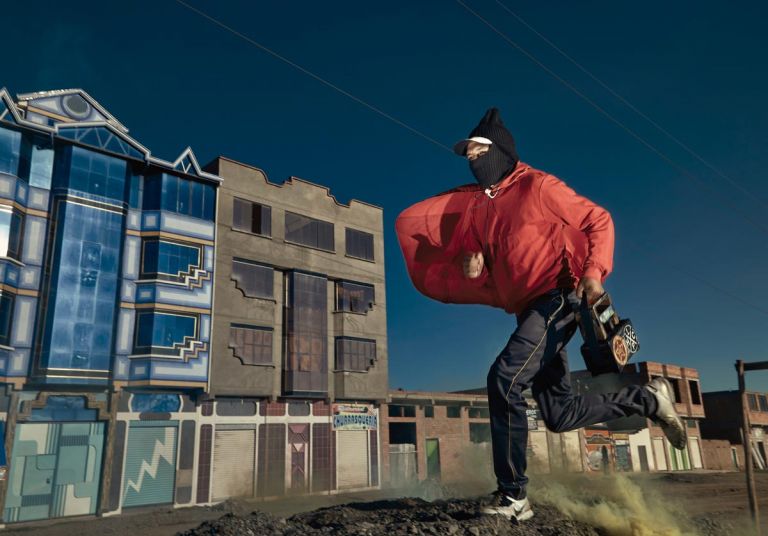There are 3000 shoe shiners who go out into the streets of La Paz and El Alto suburbs each day in search of clients. They are from all ages and in recent years have become a social phenomenon in the Bolivian capital.
What characterizes this tribe is the use of ski masks so they will not be recognized by those around them. They confront the discrimination they face by these masks. In their neighbourhoods no one knows that they work as shoe shiners, at school they hide this fact, and even their own families believe they have a different job when they head down to the centre of the city from El Alto.
Over the last three years, Uruguayan artist Federico Estol collaborated extensively with a group of shoe shiners associated to nearly 60 families of shoe shiners. Estol’s idea was to invite the shoe shiners to imagine a creative new version of their story.
Borrowing from the visual language of comic books and graphic novels, and incorporating elements of day-to-day life in El Alto, the narrative that emerged saw the shoe shiners portray themselves not as outcasts, but as urban superheroes tending to the unwavering local demand for polished footwear.
Beyond this storyline, the dignifying nature of the Héroes del Brillo project is woven into the very fabric of the publication’s creation and dissemination. The various photographic sessions encouraged the shoe shiners to reconsider and derive inspiration from their daily activities, whilst the act of distributing the resulting newspaper on the street would generate opportunities to engage members of the public, challenging the negative connotations of this profession in the process. In just three months, a staggering 6000 copies were sold across La Paz, with the revenues shared between all the participants.
Participatory photography is a mode of social activism that contributes to global peace in a different way and sometimes is more transforming than the direct documentary photography media coverage.

















